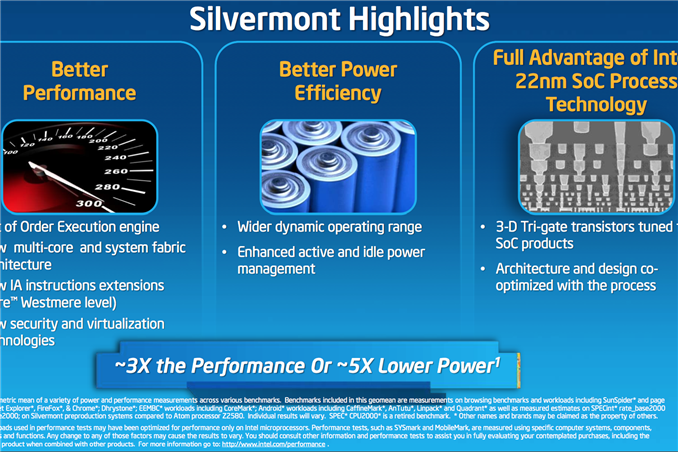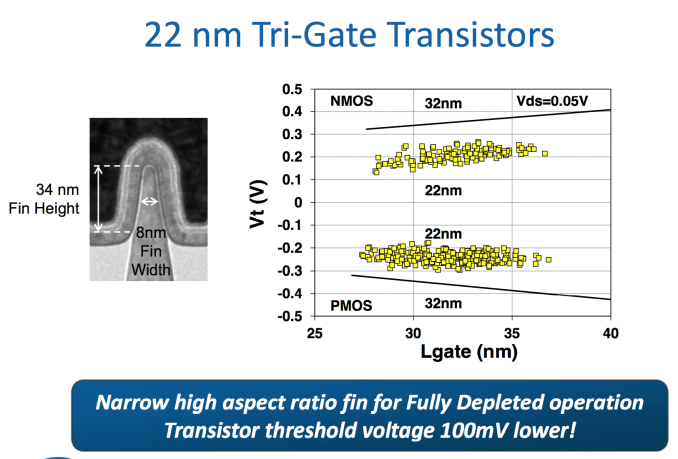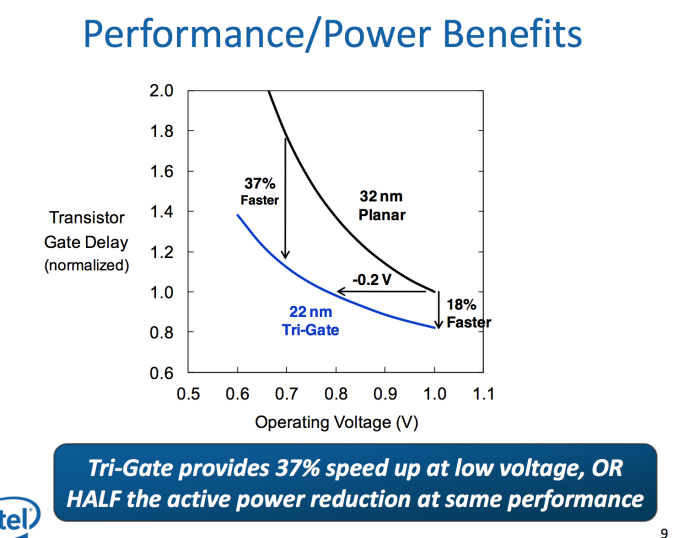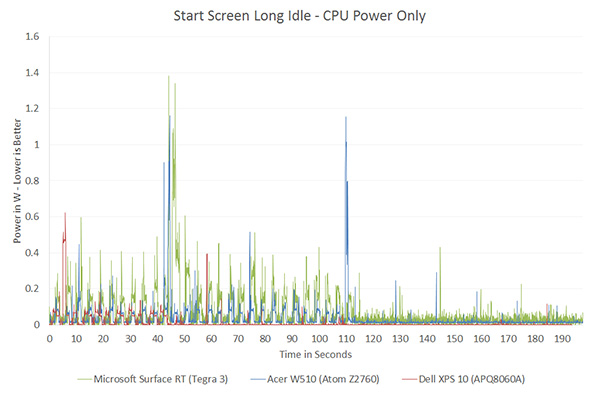Intel’s Silvermont Architecture Revealed: Getting Serious About Mobile
by Anand Lal Shimpi on May 6, 2013 1:00 PM EST- Posted in
- CPUs
- Intel
- Silvermont
- SoCs

The most frustrating part about covering Intel’s journey into mobile over the past five years is just how long it’s taken to get here. The CPU cores used in Medfield, Clover Trail and Clover Trail+ are very similar to what Intel had with the first Atom in 2008. Obviously we’re dealing with higher levels of integration and tweaks for further power consumption, but the architecture and much of the core remains unchanged. Just consider what that means. A single Bonnell core, designed in 2004, released in 2008, is already faster than ARM’s Cortex A9. Intel had this architecture for five years now and from the market’s perspective, did absolutely nothing with it. You could argue that the part wasn’t really ready until Intel had its 32nm process, so perhaps we’ve only wasted 3 years (Intel debuted its 32nm process in 2010). It’s beyond frustrating to think about just how competitive Intel would have been had it aggressively pursued this market.
Today Intel is in a different position. After acquisitions, new hires and some significant internal organizational changes, Intel seems to finally have the foundation to iterate and innovate in mobile. Although Bonnell (the first Atom core) was the beginning of Intel’s journey into mobile, it’s Silvermont - Intel’s first new Atom microarchitecture since 2008 - that finally puts Intel on the right course.
Although Silvermont can find its way into everything from cars to servers, the architecture is primarily optimized for use in smartphones and then in tablets, in that order. This is a significant departure from the previous Bonnell core that was first designed to serve the now defunct Mobile Internet Devices category that Intel put so much faith in back in the early to mid 2000s. As Intel’s first Atom architecture designed for mobile, expectations are high for Silvermont. While we’ll have to wait until the end of the year to see Silvermont in tablets (and early next year for phones), the good news for Intel is that Silvermont seems competitive right out of the gate. The even better news is that Silvermont will only be with us for a year before it gets its first update: Airmont.
 Intel made this announcement last year, but Silvermont is the beginning of Intel’s tick-tock cadence for Atom. Intel plans on revving Atom yearly for at least the next three years. Silvermont introduces a new architecture, while Airmont will take that architecture and bring it down to 14nm in 2014/2015. One year later, we’ll see another brand new architecture take the stage also on 14nm. This is a shift that Intel needed to implement years ago, but it’s still not too late.
Intel made this announcement last year, but Silvermont is the beginning of Intel’s tick-tock cadence for Atom. Intel plans on revving Atom yearly for at least the next three years. Silvermont introduces a new architecture, while Airmont will take that architecture and bring it down to 14nm in 2014/2015. One year later, we’ll see another brand new architecture take the stage also on 14nm. This is a shift that Intel needed to implement years ago, but it’s still not too late.
Before we get into an architectural analysis of Silvermont, it’s important to get some codenames in order. Bonnell was the name of the original 45nm Atom core, it was later shrunk to 32nm and called Saltwell when it arrived in smartphones and tablets last year. Silvermont is the name of the CPU core alone, but when it shows up in tablets later this year it will do so as a part of the Baytrail SoC and a part of the Merrifield SoC next year in smartphones.
22nm
To really understand the Silvermont story, you need to first understand Intel’s 22nm SoC process. Two years ago Intel announced its 22nm tri-gate 3D transistors, which would eventually ship a year later in Intel’s Ivy Bridge processors. That process wasn’t suited for ultra mobile. It was optimized for the sort of high performance silicon that was deployed on it, but not the ultra compact, very affordable, low power silicon necessary in smartphones and tablets. A derivative of that process would be needed for mobile. Intel now makes two versions of all of its processes, one optimized for its high performance CPUs and one for low power SoCs. P1270 was the 22nm CPU process, and P1271 is the low power SoC version. Silvermont uses P1271. The high level characteristics are the same however. Intel’s 22nm process moves to tri-gate non-planar transistors that can significantly increase transistor performance and/or decrease power.
This part is huge. The move to 22nm 3D transistors lets Intel drop threshold voltage by approximately 100mV at the same leakage level. Remember that power scales with the square of voltage, so a 100mV savings depending on what voltage you’re talking about can be very huge. Intel’s numbers put the power savings at anywhere from 25 - 35% at threshold voltage. The gains don’t stop there either. At 1V, Intel’s 22nm process gives it an 18% improvement in transistor performance or at the same performance Intel can run the transistors at 0.8V - a 20% power savings. The benefits are even more pronounced at lower voltages: 37% faster performance at 0.7V or less than half the active power at the same performance.
The end result here is Intel can scale frequency and/or add more active logic without drawing any more power than it did at 32nm. This helps at the top end with performance, but the vast majority of the time mobile devices are operating at very lower performance and power levels. Where performance doesn’t matter as much, Intel’s 22nm process gives it an insane advantage.
If we look back at our first x86 vs. ARM performance data we get a good indication of where Intel’s 32nm process had issues and where we should see tangible improvements with the move to 22nm:
Qualcomm’s 28nm Krait 200 was actually able to get down to lower power levels than Intel could at 32nm. Without having specific data I can’t say for certain, but it’s extremely likely that with Silvermont Intel will be able to drive down to far lower power levels than anything we’ve ever measured.
Understanding what Intel’s 22nm process gives it is really key to understanding Silvermont.













174 Comments
View All Comments
tech4real - Tuesday, May 7, 2013 - link
"Absolute performance"? Do we consider power constraint here at all? Atom is optimized for power-efficiency. All the current information I've seen so far suggest Silvermont will outperform A15 by a large margin in terms of power efficiency. If we throw away power constraint, Intel has Core to take care of that.Wilco1 - Tuesday, May 7, 2013 - link
I was talking about peak performance, but yes, power consumption matters too. What we've seen so far is Intel marketing suggesting that in 6-9 months time Silvermont will be more efficient than A15 was 12 months earlier. However that's not what Silvermont will have to compete with. At the end of this year A15 will have had 2 process shrinks down to 20nm in addition to a lot of tuning, so it will be far more efficient than it was 12 months ago. And A15 is just one example, Apple, QC and ARM will have new cores as well. It's reasonable to say that Intel will finally be able to compete with Silvermont, but it is far from clear that it is the overall winner like their marketing claims.tech4real - Wednesday, May 8, 2013 - link
TSMC's 20nm process is still in the works, your Q4'13 volumn production estimate seems way too optimistic, especially considering TSMC's pain in 28nm ramp. Also 28nm->20nm shrink without finfet significantly reduces its benefit.Wilco1 - Wednesday, May 8, 2013 - link
TSMC have learnt from the 28nm problems. They appear very aggressive this time, and so far the reports are they are 2 months ahead of schedule. Even if it ends up delayed to Q2'14 it's still around the same time Intel is planning to come out with Silvermont phones. The gains are not as large as with FinFETs, but enough to reduce power significantly.tech4real - Wednesday, May 8, 2013 - link
my understanding is Q2'14 volume production with high yield is almost TSMC 20nm best case scenario. Of course, the term "high yield" is such a subjective thing vendors love to manipulate with almost infinite freedom...zeo - Wednesday, May 8, 2013 - link
TSMC 20nm isn't set up for such optimization, but rather focused on cost reductions... The number of nodes, variations supported, etc will be fewer than they did with 28nm as they want to avoid the problems that caused the 28nm delays and that has resulted in a much more streamlined setup.While power leakage issues increase as FAB size is decreased... So without a solution like FinFET the power efficiency would be increasingly harder to keep it where it is, let alone reduce it...
It's one of the reasons why ARM is trying to push other options like Big.LITTLE to boost operational efficiencies and not rely as much on FAB improvements.
While it's also why not all ARM SoCs have moved to 28nm yet as for many the power leakage was still too much of a issue for their designs to make the switch right away, so there could be additional delays for 20nm releases.
Though ARM should get FinFET in time for for the 64bit release... but by that time Intel would be on its way to 14nm...
Jaybus - Wednesday, May 8, 2013 - link
Think of it as 2-wide x86 vs. 3-wide RISC. Rather than translating the x86 microcoded instruction into 2 or 3 RISC-like instructions, Intel's decode keeps it a single instruction down the pipeline. The RSIC architecture has to decode more instructions, so needs the 3-wide to keep up with the x86 2-wide.The point about the frequency scaling is this. The tri-gate design has a gate on top of 2 vertical gates. This gives it 3x the surface area as compared to FinFET. The greater surface area allows more electrons to flow within a given area of the die, and that allows a greater range of voltages and/or frequencies for which it can operate efficiently.
Wilco1 - Thursday, May 9, 2013 - link
Eventhough macro-ops helps decode, they need to be expanded before they are executed. So in terms of execution, macro-ops don't help. Also as I mentioned in an earlier post, most ARMs also support macro-ops, allowing a 2-way ARM to behave like a 4-way. So macro-ops don't give x86 an advantage over RISC.jemima puddle-duck - Monday, May 6, 2013 - link
Without wishing to be overly cynical, Anandtech has a history of 'NOW Intel will win the mobile war' articles, which get recycled then forgotten in time for the next launch. It's all very clever stuff, but curiously underwhelming also.Roffles12 - Monday, May 6, 2013 - link
I don't remember reading any 'NOW Intel will win the mobile war' articles on Anandtech. Perhaps your perception is skewed. Intel articles are typically of a technical nature discussing the inner workings of the architecture and fab process or discussing benchmarks. Intel is really the only company so completely open about how their technology works, so why not make it a point of discussion on a website on a website dedicated to the subject? If your head is clouded by fud from competing companies and the constantly humming rumor mill, maybe you need to back off for a while. At the end of the day, it's up to you to digest this information and form an opinion.